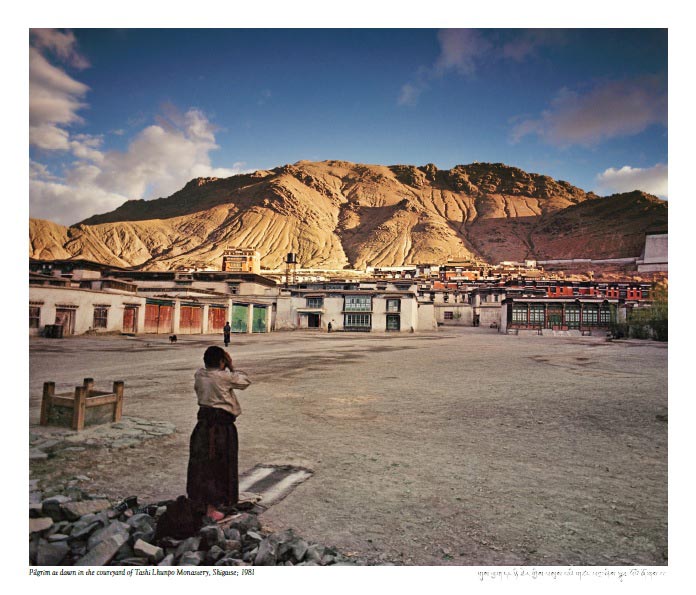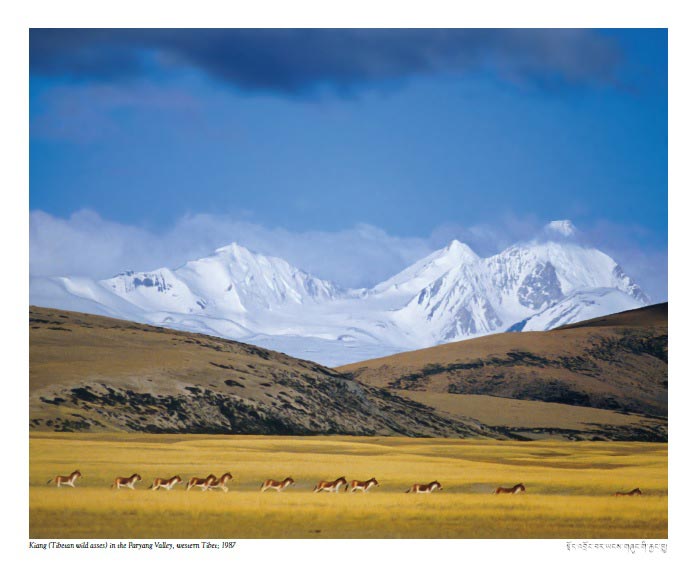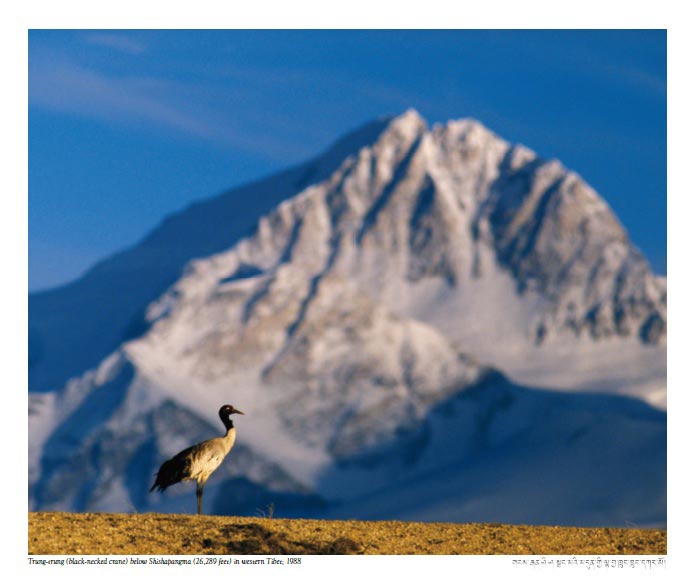All the photographs and text featured in the calendar are from a special book titled “My Tibet” by the late photographer and adventure mountaineer, Galen Rowell. Galen’s passion for Tibet grew after travelling on assignment to Tibet a number of times in the mid to late 1980’s. He believed that the future of Tibet’s environment and landscape, would be best guided by Tibetans themselves, whose Buddhist culture teaches a reverence for the interdependence of humans and nature. He writes in the book,
“The Tibetan Plateau if one of those remaining legendary wild places, such as the Serengeti Plain, the Galapagos Islands, and Yosemite Valley, that must be preserved for their own sake for everyone instead of being altered for the short-term benefit of a few. So, too, should Tibetan culture be allowed to endure in its natural environment.”
Galen felt it very important to share the story of Tibet with a wider audience. This pursuit led him to the idea of a book of his photographs of Tibet, paired with quotes and responses of His Holiness to the images of a homeland that he had not seen with his own eyes for over three decades. So, Galen headed to Dharamsala, India, for his first audience with His Holiness the Dalai Lama.

In the introduction of the book, Galen describes His Holiness’s reaction to the first slide,
“The instant the animals appeared on the screen, His Holiness leapt of his chair in boyish delight … With an expression of sheer joy, His Holiness began pouring out his feelings: “We have always considered our wild animals a symbol of freedom. Nothing holds them back. They run free. So, you see, without them, something is missing from even the most beautiful landscape. The land becomes empty, and only with the presence of wild living things can it gain full beauty. Nature and wild animals are complementary. People who live among wildlife without harming it are in harmony with the environment. Some of that harmony remains in Tibet, and because we had this in the past, we have some genuine hope for the future. If we make an attempt, we will have all this again.”
(The first slide was a photo of a herd of kiang, the Tibetan wild ass.)

At ICT’s headquarters in Washington DC, we are lucky that many of Galen’s photographs and text hang on the walls around the office. Often times, I pause between steps to read a quote or gaze at a photograph. I find them poignant and deeply moving. These images of Tibet are from the mid to late 80’s, right around the time that ICT was established and when Galen was Co-Chair of the ICT’s Advisory Board. Even while more than 25 years have passed since these images were taken, and there have been further drastic changes in Tibet, these photographs are a stark reminder that Tibet today deeply needs the attention and support of the rest of the world.
It is also timely that just last month, the Central Tibetan Adminstration in Dharamsala, has launched a campaign urging “world leaders gathering in Paris for the UN COP21 climate change summit to recognize Tibet’s importance to the environmental health and sustainability of the planet, and as an environmentally strategic area, make Tibet central to global climate change discussions.” In a video message prepared for the climate change summit, His Holiness the Dalai Lama urges us all to protect the environment. He says the goal is to have “a healthy world, a healthy planet.”


I want to buy 2016 calendar
You can buy a calendar by visiting our online store: http://www.savetibetstore.org/ICT-2016-Wall-Calendar/productinfo/CAL-16/
I’m love I CT for supporting TIBET and long live ICT.
Thanks